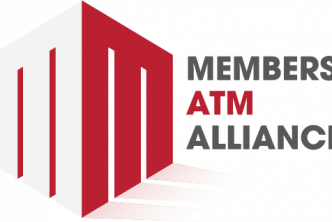By Jason Veenker, Solution Specialist for AdvantEdge Analytics.
History is filled with examples of failures to look beyond the short-term and understand the risks and rewards in the future. Take the prosperous California mining town of Bodie in the late 1880s, for example. The town skirmished with multiple catastrophic fires but planned and executed for tomorrow with a water pumping system that helped keep them safe for 40 years. Yet, after years of neglect and postponing upkeep for the pumping system, Bodie burned down in 1932. The pipes and infrastructure had clogged and the people who knew the system or how to maintain it had all moved on or died.
When we think about credit unions today, one could argue we are similarly at risk as Bodie, which is now a preserved historical location and legitimate ghost town.
Tomorrow’s Solution May Not Be Enough
When the credit union movement started, it was small, and we knew all our members. We went to their barbeques and celebrated marriages and births. But times have changed, and member bases are huge. Data analytics can help us connect with our members on a personal level – make them feel like we’re sitting across from them, enjoying a hot dog.
For this reason, many credit unions have thought that a technology (a data warehouse) is the solution. The thinking goes, “If we can get everything connected, aggregated, combined, and centralized, we’ll get better reports to help us understand our members.”
That’s tomorrow’s solution. And with the pace of technology and member expectations, it won’t be enough by tomorrow afternoon.
To achieve personalization and a great member experience, we must unlock the promise of “beyond tomorrow” by changing how we think about and use data analytics. This isn’t about better reports or standing up a technology. It’s about:
- building a culture of data enthusiasts;
- use-case driven approaches to strategy
- innovative problem solving
The technology will always change no matter what we do – it’s incumbent upon credit unions to instill a mindset that can wisely determine when the needs of the members demand a technology upgrade.
You see, the fire of 1932 may have been the final straw on Bodie’s back, but that’s not what ultimately pushed the town into failure. Years of ore deposits and precious metal declines in the mines squeezed the economic viability out of the town. New mining towns with fresh strikes drew citizens away, along with the only railroad. Bodie was successful in preparing for tomorrow’s fire, but not for the unexpected forces that ultimately combined for its failure.
Credit Union Boom Town
The good news is that, if we appropriately harness the power of data transformation, we’re not going to end up like Bodie. The solutions, the technology, the partnerships – all of it is in place to ensure we don’t fail to look beyond tomorrow.
Far from being a landscape of ghost towns, credit unions will thrive. When focused on the member and continuously evaluated, data analytics unlocks three primary value drivers for credit unions:
- boosting P&L
- creating new sources of growth
- delivering the digital bank
For credit unions, it comes down to data analytics being the key to transformation for both today and the future. Transformation happens when you organize data through data management, translate it through reporting and visualizations, and then get to the real meat – execute on actionable insights to drive real change.
For information on AdvantEdge Analytics, contact consult@myleverage.com.





